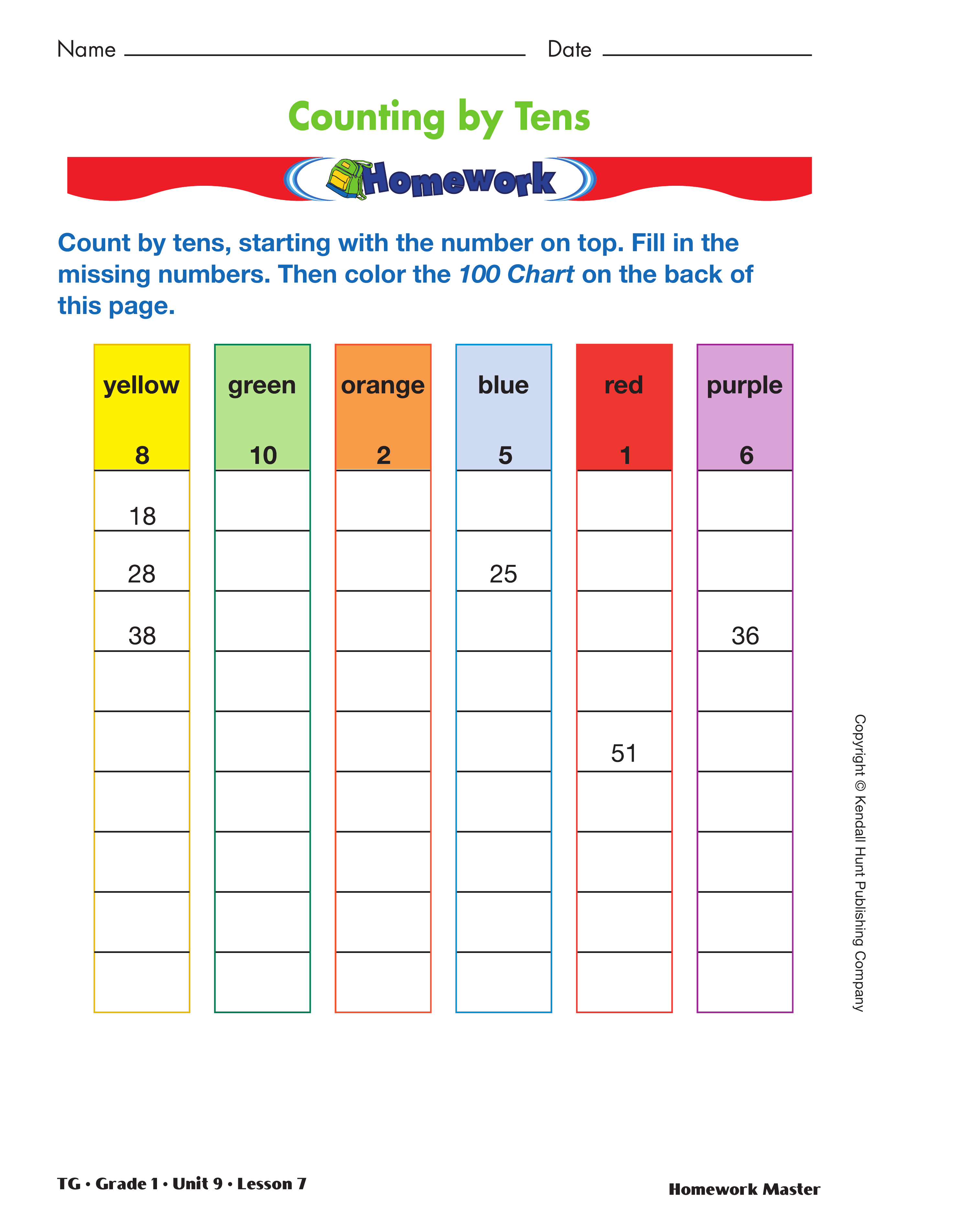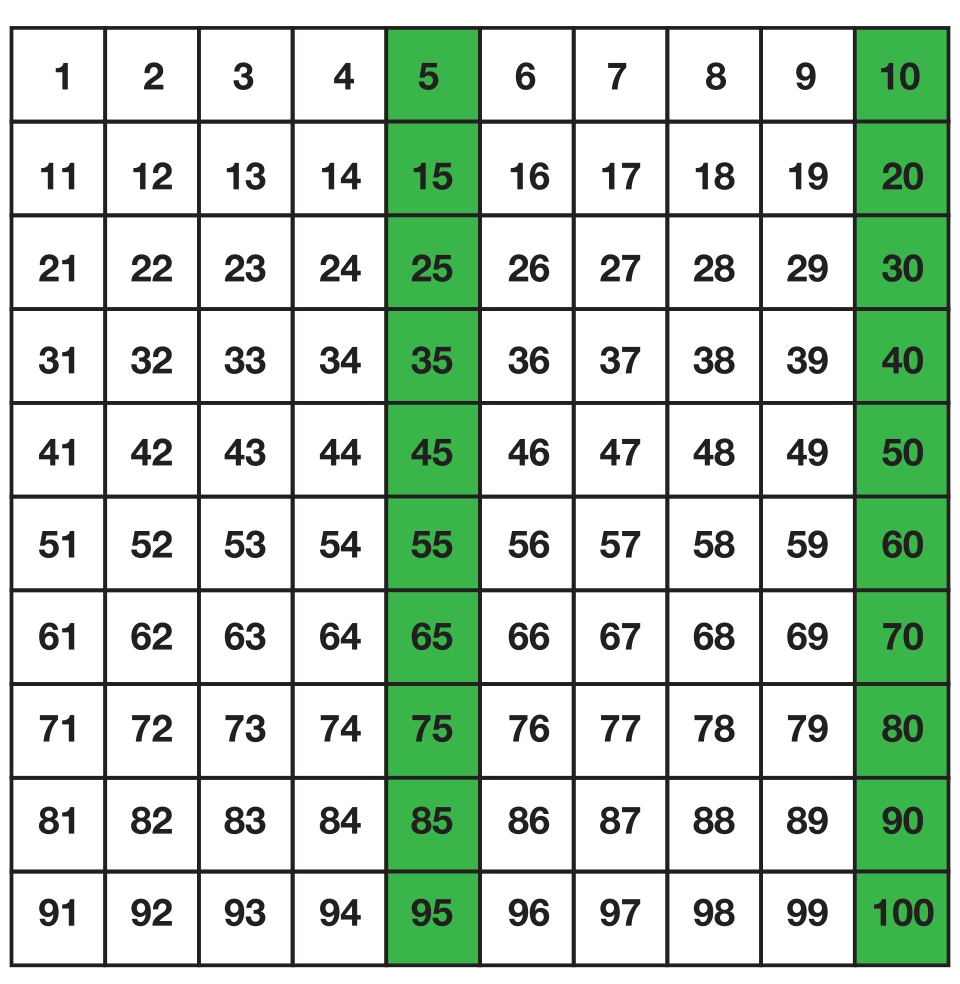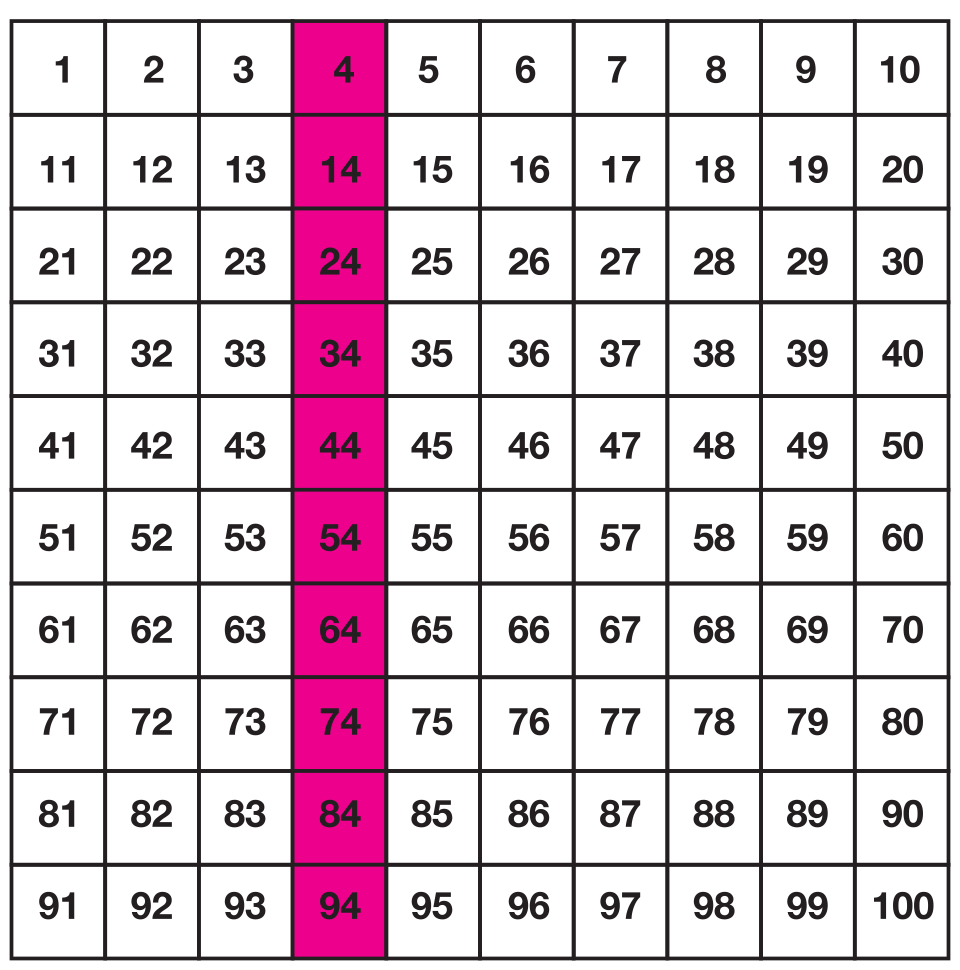Patterns on the 100 Chart
Est. Class Sessions: 2–3Developing the Lesson
Part 2: Patterns on the 100 Chart
Skip Count on the 100 Chart. Direct students' attention to the display of the 100 Chart page from the Student Activity Book. Give students a few moments to look over the 100 Chart page.
Ask:
Students count along with you as you skip count by twos to 40 starting with 2. Then repeat the count, but this time ask students to place a connecting cube on each even number as they say it. Use a highlighter to shade the corresponding numbers on the display of the 100 Chart.
When they finish counting by twos and placing the cubes, ask:
Remove the cubes from the chart and repeat the same procedure, including placing cubes on the 100 Chart as you skip count, this time counting by fives to 50. See Figure 4.
Ask:
Compare Name Grid Pattern to Skip Counting by Fives. Display the Name Grid from Lesson 4 with the five-letter name you prepared.
Discuss how the pattern made by the 5-letter name is similar to the pattern made by skip counting by five on the 100 Chart.
Skip Count by Tens. Clear the 100 Chart and have students count along with you as they skip count by tens to 100. Before beginning to skip count, have students count with you by ones until they reach 10. Then have students place a cube on 10. Count 10 more together, starting at 11 until they reach 20. Then place a cube on 20. Count 10 more, starting at 21 until they reach 30. Then place a cube on 30. Continue to count this way until they reach 100, placing a connecting cube on each ten (number) as they say it. 10, 20, 30, 40 …100. Students count a second time by tens to 100, tapping the cubes as they count: 10, 20, 30, 40, 50 …100.
When they finish counting by tens, ask:
Skip Count by Tens Starting with Four. Ask student pairs to make a train of four cubes and then ask them to place a cube on the number 4 on the 100 Chart. Next have them build one train of ten cubes and set it next to the train of four cubes. Ask them to identify the total number of cubes by placing a cube on the 100 Chart. Have students place a cube on 14 on the 100 Chart.
Ask:
Ask students to continue to add 10 more and identify the number by placing a cube on the number chart until they reach 94. See Figure 5.
Ask:
Display each of the 100 Charts you shaded in during the discussions in this lesson. List on chart paper the number patterns they can identify. See the Sample Dialog.
Ask:
Assign the Counting by Tens Homework Master.



















